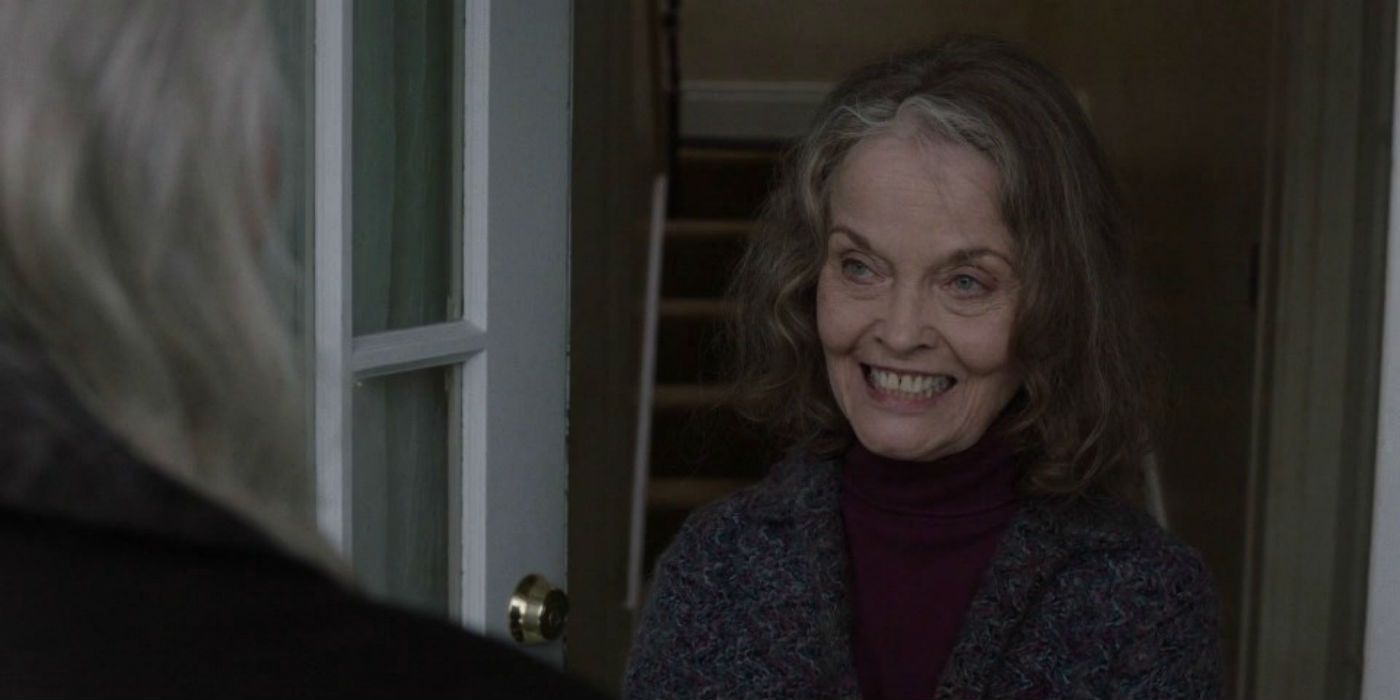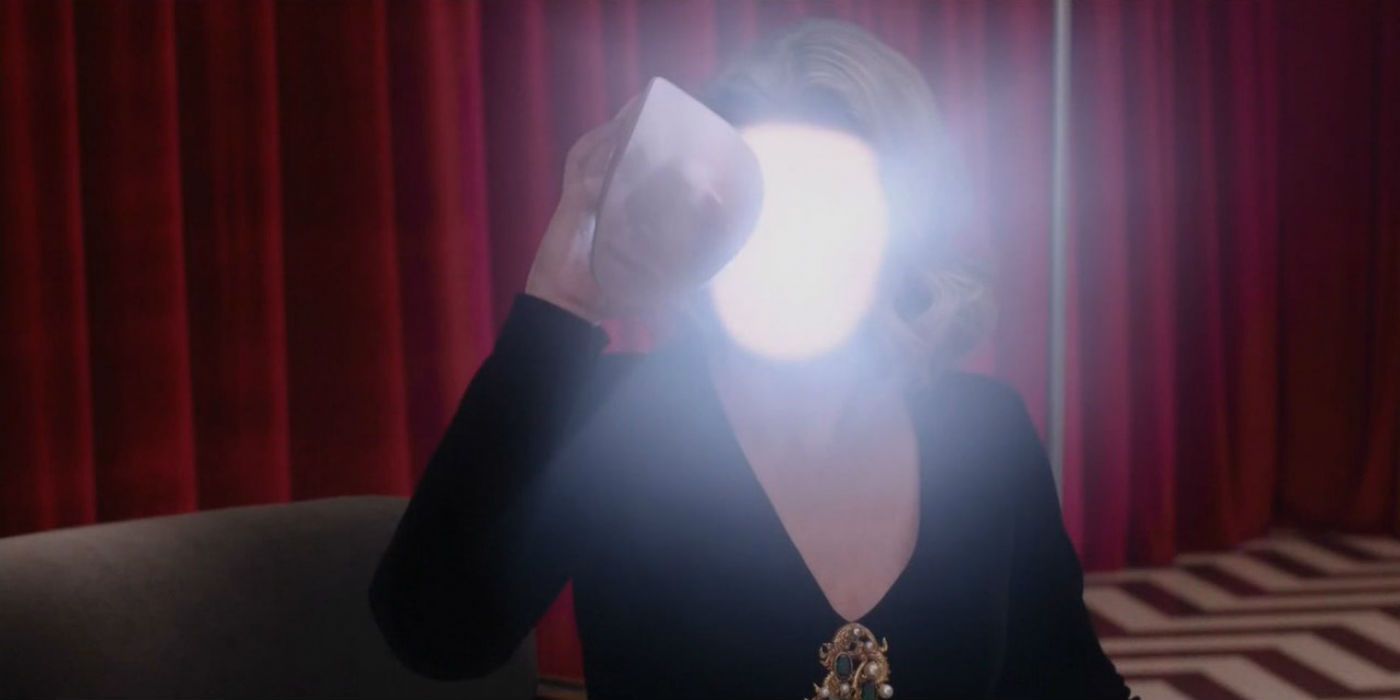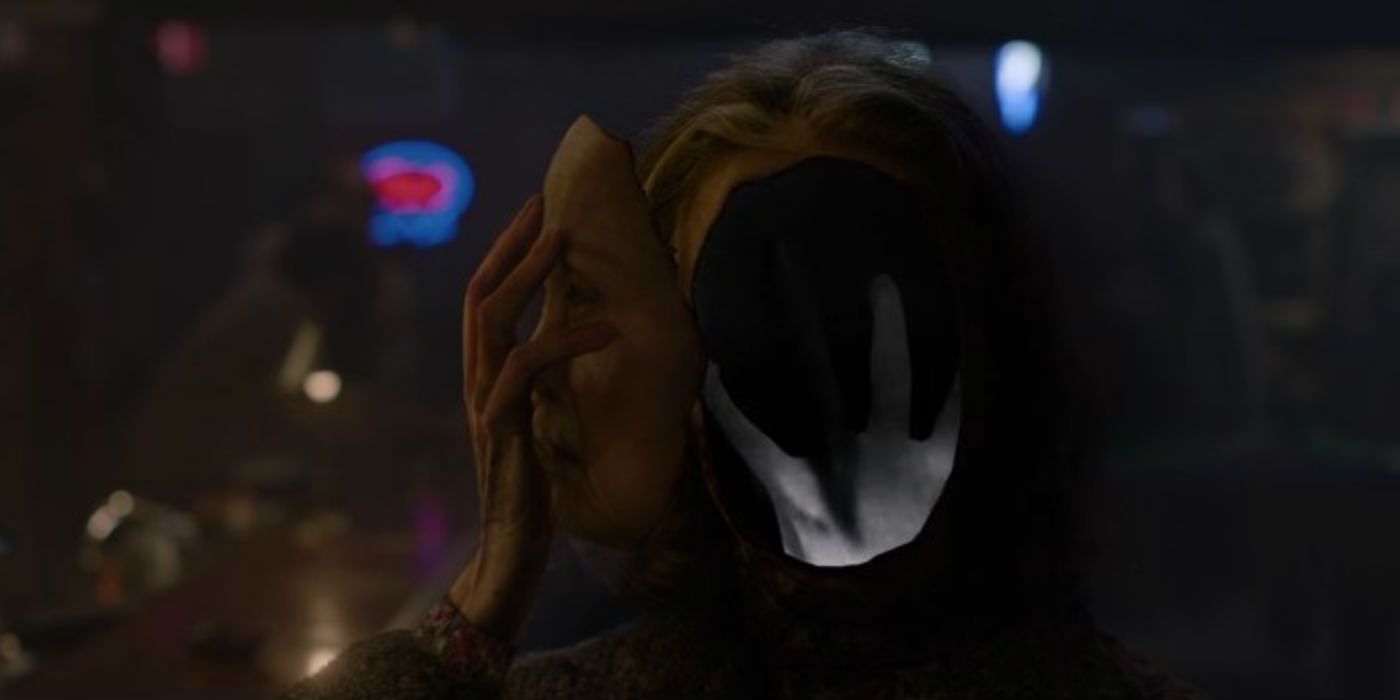Twin Peaks: The Return did not answer most of the mysteries that the original two seasons and follow-up movie cultivated, but the answers it did give were no small revelations. One of the biggest surprises was solving the mystery”or at least deepening the mythology”surrounding Judy; the woman who lived above the convenience store which was a gateway for Lodge entities, as discovered by the elusive Phillip Jeffries. Judy, as it turns out, is the great negative force that the Blue Rose task force was trying to stop.
We saw this force in Part 1, killing Sam and Tracy after coming out of the glass box in New York. Later, she attempted to stop Cooper from leaving the Mauve Room with Naido and, in a flashback, gave birth to BOB in the now-classic Part 8 episode. The much larger truth was that we had been watching her sporadically all season; Judy had taken up residence inside Sarah Palmer.
This wasn't much of a surprise. While Sarah Palmer was seen here and there throughout the eighteen episode miniseries, her scenes were laced in an isolative menace. She was speeding her way to death in front of the TV, chain-smoking and absorbing vodka like it was medicine. The publicized trauma of Laura's death and Leland's crimes are long forgotten, or at least ignored, by a town that was ready to move on. That fact, combined with Sarah's instinctual knowledge of the dark forces that had taken her husband and daughter from her, ensured that her private trauma would never scab over. Within the community, Sarah existed like a living reminder, a living ghost, haunting whatever digs carried a liquor license. As such, she was often alone; the last person to succumb to the worst tragedy Twin Peaks had ever seen. Her status and her pain made her ripe for an entity for the Black Lodge to feed. How long this had been going on is up for debate.
In Part 2, after the killing of Sam and Tracy, Mr. C - the evil Cooper doppelganger - learned that Phillip Jeffries was trying to kill him. Using a transmitter, Cooper talks to someone who is pretending to be Phillip Jeffries. (Later in the series, Jeffries himself would reveal he did not know how to contact Mr. C, lending credence to the idea an imposter was operating against him. Jeffries would also claim that Mr. C has met Judy before - as Sarah Palmer.) The voice that spoke to Mr. C on the other end of the line definitely didn't have the strange David Bowie British/American south twang. Some have speculated it was Judy (as Sarah Palmer). The voices do share some similarity, and when viewing the end-credits, there is no one listed as playing the voice of Phillip Jeffries or any other indication of a voice actor, so the possibility is there that Sarah Palmer actress Grace Zabriskie provided the voice as a clue. However, the reason behind why Judy and Mr. C (who was also carrying around BOB) had some kind of mutual enmity is unclear.
The origin of the entity is unclear. While we saw that the atomic test in Part 8 allowed Judy to expose BOB to the world, Judy's own existence has been known to the world for quite some time. Gordon Cole references her original name being "Jowday" (possibly spelt Jià o Dé, or some other variation), which, as a legend, was passed down and altered over time to be called Judy.
From the series, we know that the negative entities have always had access to our world through innumerable gateways. It's likely that the Trinity test simply opened a new gateway that Judy used. There are many of these portals, which is how Phillip Jeffries came to know her in Buenos Aries and Seattle above the convenience store. His emphatic and desperate desire not to talk about her when he teleported to the Philadelphia FBI office in 1988 underlines how truly evil she is - not even a trained Blue Rose officer can quite process the profundity of her evil.
In one of the final scenes in Part 1, Sarah becomes enthralled by a nature program showing a pack of Panthers mutilating and consuming their prey. Initially, perhaps, Sarah was beginning to understand the thrill of the violence that Judy allowed to percolate; perhaps, she understood the Lodge entities better then than ever before. The sudden jolt may have also come from Judy possessing Sarah right then and there. Leland's actions while possessed by BOB were sometimes erratic, similar to Sarah's in the grocery store and her bizarre conversation with Hawk. The possessed usually do not know they're possessed and have strange blackout-like fugues, though once they are free - as Leland was when he killed himself - they become aware of the things the entity did with their body. Hence, Leland's true heartbreak at his daughter's funeral, and Sarah's absolute surprise at seeing the trucker suddenly dead on the floor of the bar.
Given that Judy has taken Sarah Palmer - and given her level of power - it's safe to assume that whatever it was the Hawk heard in the back of the Palmer house was another of these entities. Based on the ending of Part 18, with the Palmer house being occupied at one time by the Chalfonts and currently the Tremonds - both Lodge entities - shows the expanse of influence Judy has. If Cooper and Laura are in the past, it shows us how long the Palmer family has been moved around as chess pieces; if it's the future, then it's clear that Judy has taken the house as a prize. Nothing these entities do, especially in the case of the Palmers, is done on accident.
In Part 8, we learn that the Fireman and Señorita Dido created Laura Palmer after witnessing Judy creating BOB. Naturally, we focused on BOB; his possession of Leland Palmer and his obsession with destroying Laura added to the Möbius strip of violence and suffering that is BOB's interaction with the Palmer family. Instead, it's clear now that their intention was for Laura to be the light to fight the darkness of Judy. This point is driven home in Part 1 when Laura removes her face revealing a pure, white light juxtaposed against Sarah removing her face in Part 14, revealing a black void.
Adding both Judy and Sarah Palmer not only brings in a generational aspect to the battle”after all, good and evil is an endless battle”but it makes the struggle a matter of family. And, of course, by possessing Sarah, Judy defiles the one final member of the Palmer family while adding a kind of spiteful irony to the proceedings. Sarah once birthed Laura, the vessel of light, and she herself was now a vessel for the Mother of Evil. To fight Judy, Laura would have to fight her own mother. Wearing Sarah's skin, Judy could claim in a roundabout way that she was Laura's mother. Again, it adds to that cyclicality of good and evil. One can't exist without the other and one demands the existence of the other. They are connected like a family.
This ties into the end of the series. Judy, using Sarah's voice, whispers Laura's name, apparently knocking Laura out of her Carrie Page delusion. The truth strikes her like a hammer: her trauma can never be erased. Pure evil cannot be ignored, only confronted. The sacrifice of fighting the battle against evil is the innocence of those who are fighting it. Cooper and Laura, caught in this cycle”where they see themselves repeatedly changed at the character level (living as Richard, Dougie, Mr. C or Carrie Page) is a metaphor for the loss of that innocence and the changes that can happen once darkness becomes known and confronted. Judy was never defeated in the series because she never can be. Cooper and Laura are never truly gone because they can't be either. They are the balancing scales of the forces of existence.



